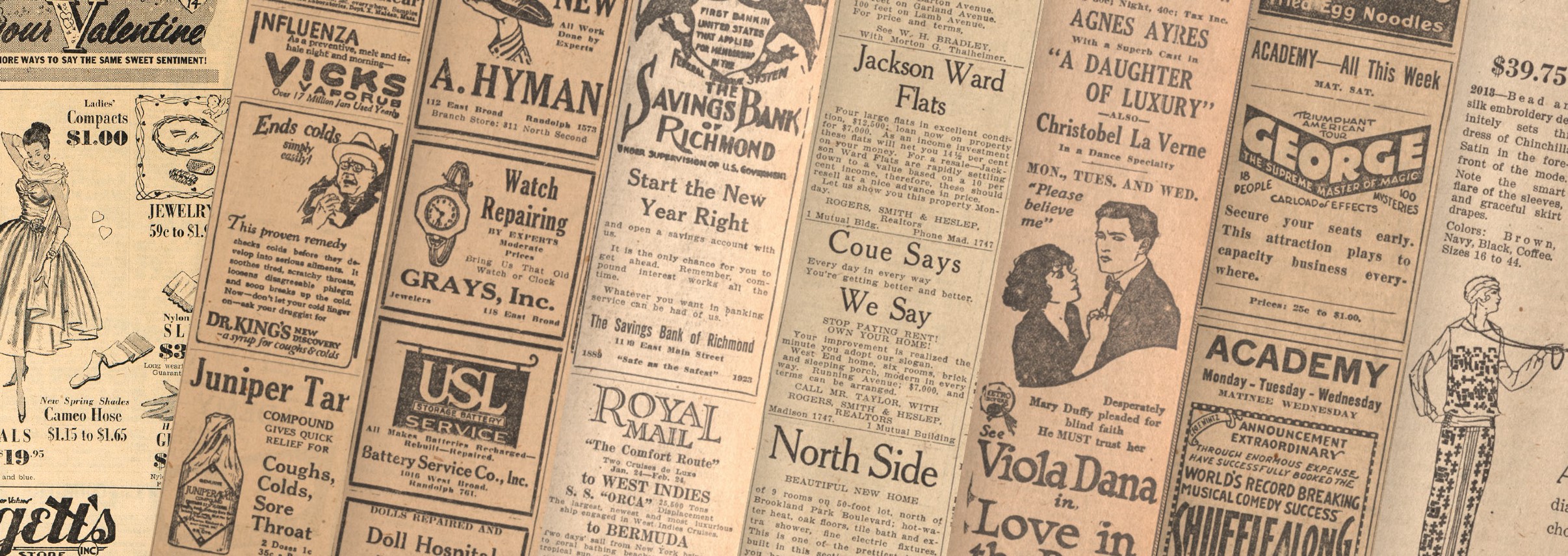Virginia Chronicle is the Library of Virginia’s free online newspaper database. It has an array of easy-to-use features to assist in your research.
A fun and quite useful tool can be found after a search. Right there on the Virginia Chronicle main page, under “Search the Collection,” enter your search term and view the results. The bar graph with a blue border will display the earliest to the most recent years the term appears in the database.
The initial display box is too small for practical use, so just click on the button in the upper right-hand corner of the blue border and voila – the bar graph expands across the page!

The graph provides an array of results based on the number of “hits” in a given year. For many searches, it may appear to be a random distribution of results; for other searches, however, the bar graph will prove intriguing, meaningful, and a gateway to further investigation.
To start, let’s take an easy one: searching for the word “Titanic.”
While “Titanic” is an adjective in the English language, it is best known for being the name of the ocean liner that sank in the frigid waters of the North Atlantic on April 15, 1912. Look at the graph and, no surprise, you see a massive spike in the year 1912. Scan to the right and you will see a smaller but noticeable bump. That occurred in 1997/1998, the years of the Titanic movie phenomenon.
While we’re being morbid, let’s try terms such as “Epidemic” and “Earthquake”
If you’re studying disease, epidemics, pandemics, etc., the graph might help to provide starting points. The graph reveals many hits during World War I, which is likely due to the so-called “Spanish” Flu, but there are other years that show an increased use of the word “epidemic.” And if you’re into earthquakes, the graph can direct you to specific years with more activity, such as the 1906 San Francisco earthquake.
One might be interested in something that is both tangible but also a concept. For example, the phrase “Civil Rights” sees a bump beginning in the 1860s and again in the 1940s, peaking in 1963. Consider such an array as a landscape that reveals everything from specific events, to passing fads, to huge social movements – a skyline of prevailing and evolving thought.
Did you know hemp was once a cash crop? It was a hot topic throughout the nineteenth century. Check it out.
It can be a term, a concept, or a profession that we now take for granted. But when did it become part of the language? See the results for “public relations,” which cemented itself into the lexicon in the 1940s and onward.
Virginia Chronicle is an excellent resource for a variety of historical research, but for many, the newspaper database is a handy complementary tool for genealogical sleuthing. Type in a family name and it may help direct you to specific years for birth, marriage, death, and related items.
Let’s try the family name Blankenship. I wasn’t expecting such a robust response as 40,091 hits.
I think you get the idea. Fire up Virginia Chronicle, perform a search, and sidle up to the bar graph to see how it may assist you in your quest for knowledge.
Virginia Chronicle has grown significantly in recent months and houses over 3.5 million pages of fully text searchable newspapers from Virginia and West Virginia. If you need to research Virginia newspapers, this is the place to go. But hang on a moment – while our page count grows, the Library continues to hold many hundreds of Virginia imprint titles in hard copy and over 35,000 reels of newspapers on microfilm. We have a ways to go before the vast number of issues and pages from our Virginia newspaper collections will be found online.














“a skyline of prevailing and evolving thought” – a poetic description!